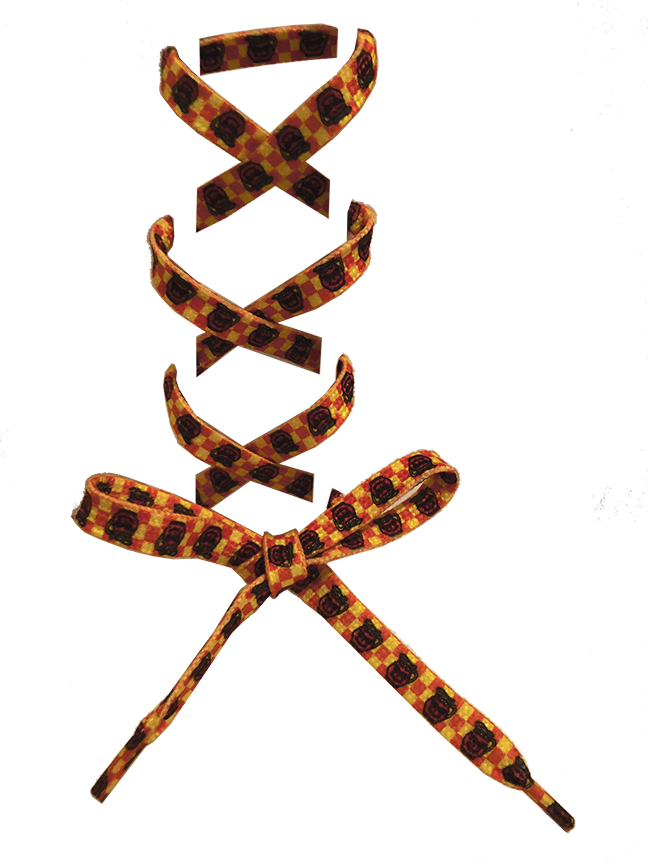
By Dorri Partain
If you’re putting away your snow boots and getting your sneakers ready for spring, a pair of novelty shoelaces will bring a pop of color to your shoe closet.
Thin strips of leather were used as the earliest shoelaces, either laced or simply wrapped and tied to keep footwear in place. Shoelaces received their first major improvement when English inventor Harvey Kennedy patented the shoelace tip, called the aglet, on March 27, 1790. The aglet serves two purposes: to prevent fraying of the ends of woven shoelaces and to ease the process of lacing the shoe.
While over the centuries shoes have featured buttons, buckles, and even Velcro closures, the lace-up is the easiest to adjust for fit – if you can keep them tied.
Woven or braided laces have been manufactured the same way since the 19th century when the braiding process was automated. Striped or plaid laces can be made by adjusting the colors used during weaving, but these checked laces featuring the Kool-Aid Man’s pitcher face were printed, a process that first became popular in the 1980’s.
The Kool-Aid Man broke through the advertising wall in 1975 when Grey Advertising executives Alan Kupchick and Harold Karp updated the smiling Kool-Aid pitcher logo first developed in 1953 by Marvin Potts. As a manned costume or an animated cartoon, the Kool-Aid Man often sports sunglasses or beach attire and has appeared on multiple products available with Kool-Aid “Kool Points.”
Kool-Aid flavored drink mixes first appeared on store shelves in 1927. Inventor Edwin Perkins (1889-1961) of Hastings, Neb., tinkered with fruit drink mixes in his mother’s kitchen and marketed his first concept as Fruit Smack in 1922. He then redeveloped his drink into a powdered mix, first naming it Kool-Ade before changing it to Kool-Aid. Six flavors were offered: cherry, grape, lemon-lime, orange, raspberry, and strawberry at ten cents a packet.
Perkins Products was sold to General Foods in 1953 and the smiling pitcher logo was developed for packaging and advertising. Hastings claims to be the “Birthplace of Kool-Aid” and houses a Kool-Aid historical and interactive exhibit at the Hastings Museum.
















